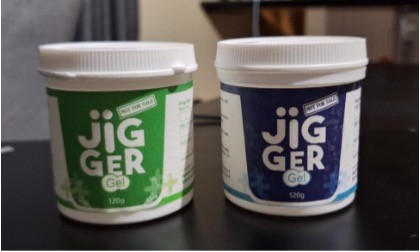
Fighting Jiggers with Science: Commercializing a Topical Treatment for Tungiasis (CoToTT)
Tungiasis, widely known as jigger infestation, is a painful parasitic skin disease caused by the sand flea Tunga penetrans. It primarily affects impoverished communities with limited access to proper sanitation and healthcare. The condition leads to painful lesions, secondary infections, and in severe cases, deformities that impair mobility and daily functioning. Despite its widespread impact, tungiasis remains one of the most neglected tropical diseases, with few effective treatment options and minimal attention from global health initiatives.
In response to this challenge, researchers from Masinde Muliro University of Science and Technology (MMUST) are leading a transformative project—the Commercialization of a Topical Treatment for Tungiasis (CoToTT). Supported by the National Research Fund (NRF), the project is spearheaded by Prof. Maurice Omolo and aims to develop and commercialize a safe, effective, and affordable topical treatment that can be scaled across East Africa.
The CoToTT initiative is grounded in a vision of health equity and scientific innovation. It seeks not only to eliminate jigger infestations but also to restore dignity, productivity, and quality of life in underserved communities disproportionately affected by the disease. Beyond treatment, the project is building a platform for long-term impact by investing in research, industrial partnerships, and local capacity.
One of the project’s early successes was the development of a minimum viable product (MVP)—a prototype topical treatment that underwent iterative testing to ensure clinical effectiveness and user-friendliness. This milestone laid the groundwork for further technological advancements and commercialization efforts.
A significant breakthrough came with the successful technology transfer between MMUST and A to Z Ltd, an industrial partner based in Arusha, Tanzania. Initially, the formulation relied on indigenous natural ingredients, but as the project scaled, alternative technologies were incorporated to support wider production. A to Z Ltd played a crucial role in refining the manufacturing process to make the treatment viable for mass distribution.
Further progress included the procurement of essential raw materials, reformulation of the patented treatment, and acquisition of modern formulation equipment. These advancements enabled the production of a cost-effective, pharmaceutical-grade product ready for clinical trials. The reformulated MVP was returned to MMUST, where preparations for clinical testing are currently underway.
In parallel, the project has focused on strategic engagement with key stakeholders. Discussions with the Vihiga and Kakamega County Governments have fostered local support, while ongoing conversations with Bio-Innovate Africa are exploring possibilities for expanding trials to Uganda and beyond. This collaborative approach ensures that the solution is not only scientifically sound but also contextually grounded and responsive to community needs.
The CoToTT project also emphasizes capacity building by integrating postgraduate and postdoctoral researchers into the initiative. This component strengthens pharmaceutical research capabilities in Kenya while nurturing the next generation of scientists committed to tackling neglected diseases.
Ultimately, CoToTT is more than a scientific achievement—it is a model for how locally-led research can address real-world problems and generate sustainable impact. By translating innovation into action, the project is contributing to better public health outcomes, economic resilience, and social inclusion for affected communities.
Through initiatives like CoToTT, the National Research Fund continues to support transformative research that delivers practical solutions to Kenya’s most pressing challenges—proving that science, when anchored in local realities, can truly change lives.